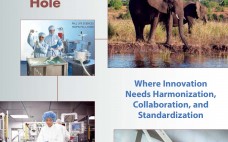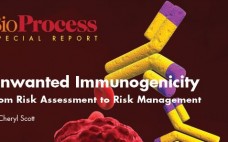Managing vaccine supply chain improvements involves a complex interaction of laboratories, other facilities, CMOs, and suppliers. Since the business of making vaccines became a commercial proposition, profitability has often been elusive. The economics are difficult: Costs of development and production, already high, are rising. Profit margins historically have been lower than those of other pharmaceutical products, in part because of the complexities of manufacturing and distributing vaccines as well as their stringent safety, testing, and quality requirements.
Special Reports
The Single-Use Watering Hole: Where Innovation Needs Harmonization, Collaboration, and Standardization
Within the past few years, the single-use technology (SUT) arena of the biopharmaceutical industry has exploded in growth. Leading organizations have predictably and understandably stampeded to the “watering hole” of single-use to drink up the advantages that disposable components offer over traditional multiuse parts and technologies. The initial value and risk-reduction results are being realized — but not without the emergence of other trade-offs. End users continue to call for standardization in emerging areas of the industry while also recognizing…
The CMC Strategy Forum Series, Part 1 – QbD and Risk Management
Introduction by Cheryl Scott The CMC Strategy Forum series provides a venue for biopharmaceutical product discussion. The meetings focus on relevant chemistry, manufacturing, and controls (CMC) issues throughout the life cycle of a therapeutic and thereby foster collaborative technical and regulatory interaction. Forum chairs share information with regulatory agencies to help them merge good scientific and regulatory practices. Outcomes of the forum meetings are published in BioProcess International. This process is meant to help ensure that biopharmaceutical products manufactured with…
Unwanted Immunogenicity: From Risk Assessment to Risk Management
Although vaccines and immunotherapies are designed to engage the human immune system in fighting disease, unwanted immunogenicity can be a major problem for protein-based therapeutics. Some patients produce antidrug antibodies (ADAs), which might lead to drug inactivation or adverse effects. Even human and humanized proteins have proven to be surprisingly immunogenic in some cases, suggesting that immune tolerance requires careful consideration in biologic product design. In rushing to deliver new drugs to market, some biotherapeutics developers have overlooked factors that…
Upstream Efficiencies, Economic Forces, and Changing Technologies Complicate Separation and Purification
When it comes to biotherapeutics manufacturing, downstream processing groups tend to get “dumped on.” Advances in cell lines, bioreactors, and culture media formulations have increased production output, providing both higher expression titers and greater volumes, but the filters and chromatography columns on the downstream side haven’t kept pace. These century-old technologies haven’t evolved as much and are reaching their limits. Regulatory agencies have contributed to innovation stagnation because they are cautious about manufacturing process changes for fear of undermining quality…
Evolving Clarification Strategies to Meet New Challenges
Increasingly efficient bioreactors allow biopharmaceutical manufacturers to achieve higher cell densities. That improved upstream efficiency has led to new purification challenges resulting from high product and contaminant concentrations as well as complex components. Therefore, harvest and clarification techniques are evolving to incorporate feed pretreatment, flocculation, and different filtration technologies such as normal-flow, tangential-flow, and depth filtration. The objective is to increase process capacities and filtrate quality, ultimately reducing biomanufacturing costs. New strategies for clarification of recombinant proteins (in particular, monoclonal…
BPI Theater at the 2014 BIO Convention
When we launched the BioProcess Theater series at the Biotechnology Industry Organization’s International Convention in 2007, we hoped that our special programming would fill a need within that event’s exhibit hall. We wanted to bring into the hall the type of technical presentations that are not generally part of the main event’s more executive-level, business-focused programming.It has therefore been especially gratifying to see our attendance growing every year — such that standing-room-only is becoming more the rule than the exception.…
Industry Experts Convene in New York to Discuss Latest Innovations: A BPI Special Report
As the biopharmaceutical industry continues to mature and grow, so too does the need to educate a broader audience of biopharmaceutical professionals interested in hearing, understanding, and applying the latest science and technology trends that support and in many cases are transforming today’s bioprocesses. To reach this extended and engaged audience, BioProcess International created the BPI Theater Series: a live, interactive program that provides bioprocessing content to traditional, noncore biopharmaceutical conference programs. It provides attendees with the opportunity to interact…
Highly Concentrated Protein Formulations: Finding Solutions for the Next Generation of Parenteral Biologics
Therapeutic protein formulation is no easy task. Biological drugs may be destined for prefilled syringes or glass vials, or they may be made into lyophilized powders that will be reconstituted in a clinical setting. No matter what their final state will be, recombinant proteins must remain potent and efficacious during storage. In recent years, pharmaceutical companies have turned increasingly to high-concentration protein formulations. Such drug formulations can offer patients the convenience of self-injection — instead of a trip to the…
Analytics for Modern Bioprocess Development
This podcast features: Mirabel Rios








